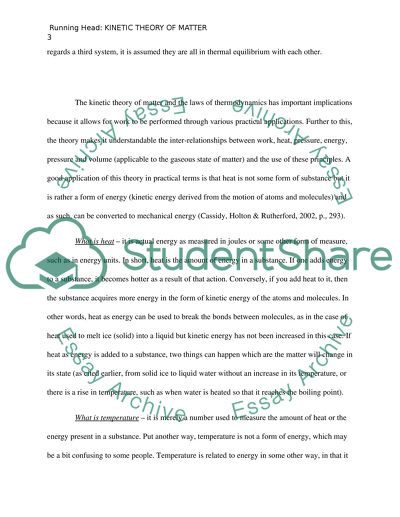Kinetic Theory of Matter Essay Example | Topics and Well Written Essays - 750 words. Retrieved from https://studentshare.org/physics/1449398-heat-kinetic-theory-temperature
Kinetic Theory of Matter Essay Example | Topics and Well Written Essays - 750 Words. https://studentshare.org/physics/1449398-heat-kinetic-theory-temperature.


